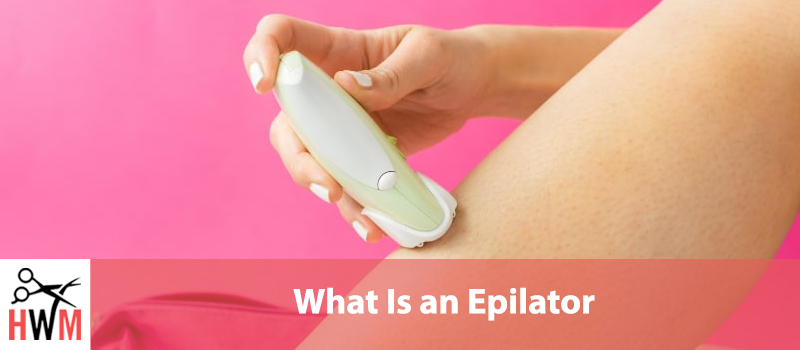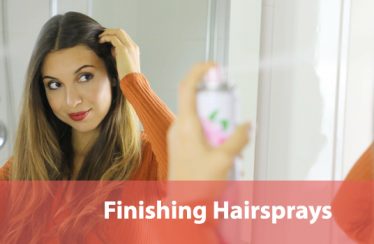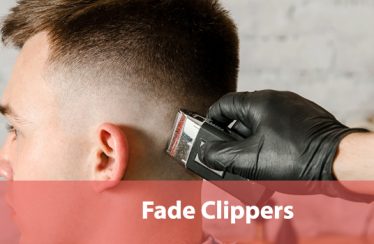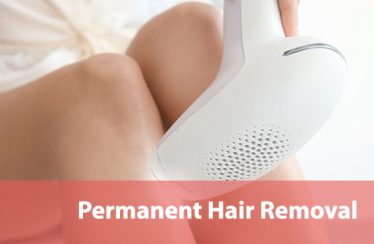Everyone can get silky smooth skin. You don’t need the right genes. You don’t even need an elaborate skincare regime. All you need is an epilator. If you’re young and new to the world of hair removal, you’re probably asking: “what is an epilator.”
In simple words, an epilator is easily the best hair removal device ever invented. If you’ve been shaving or waxing till now and are still struggling with hair on any part of your body, then a good epilator can solve it for you.
Unfortunately, when it comes to epilators, there is a lot of misinformation out there. Don’t worry, though. We’ll demystify epilators, the way they work, and every other question you can think of in this guide. Here’s everything we’ll be covering.
(Note: The navigation panel is clickable; feel free to jump around the page as much as you want)
- What Is an Epilator?
- How Is Epilating Different from Waxing?
- How Is Epilating Different from Shaving?
- Which Body Parts Can You Epilate?
- What Are the Different Types of Epilators?
- How Painful Are Epilators?
- How Much Do Epilators Cost?
- How to Use an Epilator First Time?
- How Often Should You Epilate?
- What to Expect After Epilating?
What Is an Epilator?
An epilator is basically a large-scale tweezing machine. It is a device that has multiple small tweezers mounted on a roller that rotates. Simultaneously, the tweezers open and close at an extremely fast rate so as to grab hairs and drop them off with the rotation.
Between the tweezers and the roller, epilators simultaneously grab and remove hairs from the roots. The basic working principle behind an epilator is not that different from how tweezing works. The difference here is that you epilate over a much larger area when compared to tweezing where you’re only focusing on one or two hairs at one time.
Generally, epilators come with two speed settings. These settings determine the speed of the roller’s rotation. The slower speed is designed for more sensitive, smaller regions while the faster speed is for larger areas.
Modern epilators, however, can do more than just epilation. Many of them come with multiple attachments designed for different purposes. They have attachments for shaving, exfoliation, massaging, and even pedicure.
How Is Epilating Different from Waxing?
Once you know what an epilator is, you can’t help but compare it to waxing. You wouldn’t be wrong to compare them either. After all, they do have the same objective and even work on a similar principle, i.e., pulling hair from the root.
At the same time, even though they’re quite similar, there are still a few differences. Let us explain.
Speed and Time
The biggest difference between waxing and epilating is speed. Epilating is significantly faster. If you wanted to wax your legs, first you would have to warm the wax, then pains takingly apply it to the skin and put strips on it, before pulling it off.
In contrast, if you want to use an epilator, you would just need to plug in the device and start gliding it over your skin. You wouldn’t even have to worry about the kind of mess that you normally have to deal with after waxing.
Hair Regrowth
Both waxing and epilating work well when it comes to hair regrowth. As you wax and epilate more, the rate of hair regrowth slows down, and even the hairs that grow are finer and thinner.
However, in waxing, you have to wait for hairs to grow up to a considerable length before you can re-do the process. If you don’t allow the hairs to regrow, waxing can fail quite painfully. If the hairs are not long enough the warm wax is not able to capture the hair. This results in the hairs either being pulled out halfway or being left behind completely.
On the other hand, in epilating, you don’t have to wait for hairs to reach a certain length. In fact, the moment you notice one or more hairs, you can plug in the epilator and remove them.
Ease of Travel
There is no comparison between waxing and epilating when it comes to how easy they are while traveling. Epilation wins this comparison, hands down.
To wax while on a trip, you would first have to carry everything from the wax to the strips. Further, you will also have to find a way to warm the wax to the right temperature, before you can wax. Therefore, you will not only need to carry more stuff while traveling but also find the right environment and amenities to make waxing work on the road.
This isn’t the case with epilators. You will only need your trusty epilator and a plug point to make epilation work for you while traveling. Further, epilators are designed to be compact and lightweight. You can even pop out your epilator and give your legs a quick glide in the train if you have the cabin to yourself. Although, we do suggest waiting till you get to your hotel room.
Discomfort and Pain
The pain and discomfort of epilating and waxing are comparable. However, this is only applicable if nothing goes wrong while waxing. When waxing goes wrong, it goes wrong painfully and loudly.
For example, if you heat the wax too much, it can scald or even burn your skin. This isn’t just painful at the moment, but also for the next few days. Further, skin lift is a real and present danger when it comes to waxing.
It occurs when the warm wax becomes overeager and ends up pulling a layer of the skin along with the hairs. Skin lift is not only incredibly painful but also ghastly to look at. Trust us; if it happens to you, you’ll never wear anything but a baggy pair of jeans again.
Exfoliation
Exfoliation is the removal of dead skin cells. It is important because it ensures healthier skin by preventing dead skin cells from swamping newer, fresher skin cells. Exfoliation allows your skin to breathe and makes it look more vibrant and alive.
When you wax, you’re automatically getting the benefits of exfoliation. Along with the hairs, the wax also pulls away dead skin cells, leaving your skin beautiful and supple.
This isn’t the case with epilation. Epilation is so precise that it doesn’t affect the layer of dead skin cells. However, certain epilator models come with exfoliating heads that perform the same function. These models are more advanced and, hence, more beneficial in the long run.
How Is Epilating Different from Shaving?
While epilating and waxing are similar in principle, epilating and shaving are completely different hair removal techniques. Shaving is a particularly popular hair removal technique amongst women short on time. However, epilation has the potential to displace it as the most convenient, time-saving option in the near future.
Speed and Time
Epilating is slightly faster than shaving simply because it doesn’t require shaving foam, gel, or cream.
The time you take to apply a shaving foam, gel, or cream isn’t a lot if you’re shaving a small body part like the underarms and the bikini area. However, it can quickly add up if you’re dealing with a larger region like the arms and legs.
In epilation, you will never have to worry about applying anything on the skin to remove the hairs. While the time you save may not seem all that significant, it can be precious for people who’re so busy that they count seconds.
If you’re one such individual, then you should definitely ditch shaving and take up epilating.
Hair Regrowth
When you shave, you only remove the hair that is showing above the skin. The roots of the hair are never removed. When you use an epilator, however, you pull hairs out from their root. This has a direct impact on how quickly your hairs grow back and become visible.
It is much easier, and hence quicker, for follicles to grow hair longer than to grow a new strand entirely. This is why you need to shave every day or every other day depending upon the speed of your growth, while women who epilate don’t worry about their hairs for as long as a month!
Ease of Travel
Shaving and epilating are both equally easy to use on the road. Razors and epilators are equally easy to carry around too since they’re nearly the same in size and weight. In fact, they are both light and compact enough not to be a concern in your luggage.
However, epilating is slightly more convenient because it doesn’t require creams and gels. There’s no risk of spillage as in the case with shaving. Further, you will not need access to water to get rid of hairs with epilation.
At the same time, if you’re the camping type, you’ll probably want to stay with shaving since power is a prerequisite to epilation.
Discomfort and Pain
Shaving is, by far, the least painful method of hair removal. However, the direct result of this is that you need to shave much more often than all hair removal techniques including epilation.
In terms of pain, we should also add that the more you epilate, the less painful and uncomfortable it will become until there comes a time when it becomes as painless and comfortable as shaving. Both shaving and epilating, however, can result in ingrown hairs. Ingrown hairs are caused when you disturb hair follicles while removing hairs.
Epilators pull hair to earn a living, but razors pull hair too when they get blunt. Razors with multiple blades are especially culpable for doing this. Therefore, when it comes to pain caused by ingrown hairs, shaving and epilating are probably comparable.
Which Body Parts Can You Epilate?
You can use an epilator on any part of your body, just like shaving and waxing. However, an epilator turns out to be much easier to use than the other two hair removal techniques.
Epilators that come with specialized heads for specific body parts are particularly versatile and can be used anywhere on the body. These heads are designed specifically for individual body parts.
For instance, the smaller heads are provided for facial hair removal and even bikini area hair removal. Similarly, the shapes and curves of different heads can also vary on the basis of the body parts they’re intended for.
What Are the Different Types of Epilators?
The two main types of epilators currently available in the market are dry-use and wet-use.
Dry-use epilators are corded devices meant to be used only in dry conditions. They are more common and numerous than wet-use epilators. Wet-use epilators, on the other hand, are cordless devices that can be used in the tub or the shower.
Naturally, wet-use epilators offer more flexibility and comfort. Further, they’re designed in a way that they can be used with creams and gels. This makes them significantly less painful than dry-use epilators. Wet-use epilators also tend to be more elaborate in terms of features and more expensive.
Another way to differentiate epilators is on the basis of their hair removal mechanics.
Most modern-day epilators are tweezer-type. Tweezer-type epilators have multiple mini tweezers mounted on the head. The tweezers rotate with the head, which allows them to capture and pull hairs out.
Rotating disk-type epilators and spring-type epilators were more common before tweezer-type epilators were developed.
Spring-type epilators were the first type of epilators, which is why they were crude. They first showed up in Israel at the turn of the last century and made use of a spring arrangement to pull hairs out.
Rotating disk-type epilators were inspired by spring-type epilators but were better because they made use of full-sized disks to catch and pull hairs instead of bent springs.
How Painful Are Epilators?
The answer to this question depends on your perspective. Seasoned epilator users will tell you that it doesn’t hurt at all, while new users will tell you it hurts a lot.
Similarly, while some people think that epilating is less painful than waxing, others argue that it is more. It all depends on your pain threshold. This is why women that have experience with epilation say it doesn’t hurt so much. They’ve used epilators so much that their pain threshold has gone up.
Further, pain threshold varies from one body part to another. A woman can feel discomfort while epilating her legs but feel nothing on the arms or vice versa. Also, epilating sensitive body parts such as the underarms or the bikini region will naturally cause more discomfort than other body parts like the limbs.
As it is, the pain caused by an epilator is similar to the pain caused by waxing. You’re, after all, pulling hairs out from their roots in both hair removal techniques. The best way that we can describe the sensation to you is that you’ll feel tiny pinpricks on the skin not that different from how a harsh rainfall feels.
Luckily, if your pain threshold is on the lower side, there are ways through which you can manage this discomfort. Showering before epilation is a good bet because it allows your pores to open up and your skin to relax.
Epilating while in the shower or the tub is an even better option. Staying in the shower will maximize the extent to which your pores open,and you’ll also be able to use your shower gel to relax the skin.
We should also add that the pain caused by epilation is made out to be much greater than it actually is. The fear of pain makes it much more threatening in the minds of people than it really needs to be. Your expectations of pain from epilation will definitely be greater than reality.
How Much Do Epilators Cost?
If you only compare what you have to spend upfront right now, you’ll find epilators to be much more expensive than razors and waxing supplies. However, if you calculate the cumulative effect, i.e., how much you’ll spend over time, you’ll realize that epilators turn out to be the most economical option.
The upfront cost is what puts off most women from buying an epilator. Even the cheapest epilator will be four to five times more expensive than a razor. The most economical epilator will be priced at around $30, while the most advanced one will cost close to $300.
However, once you have the epilator, your spending is over and you’ll never have to worry about wax, waxing strips, razors, cartridges, or any creams, gels or foams ever again. If you buy a good epilator, you’ll even get to use it for years before needing a replacement.
How to Use an Epilator First Time?
Using an epilator is easy so long as you follow the right technique. Further, preparing your skin in the right way and taking proper post-epilation care of your skin will even maximize the benefits and minimize complications.
Even so, some of you may make mistakes your first time like missing hairs or breaking them instead of pulling from roots. Don’t worry. It can happen to the best of us and you’ll become an epilation expert soon enough.
You should start by paying attention to the following steps when it comes to epilating your skin.
- Take a warm shower before you epilate to gain two key advantages. The first advantage of taking a warm shower is that you’ll get rid of any product and dirt buildup on the skin. The second benefit is that your skin will relax and the pores will open. If the pores are open and the skin relaxed, it will be easier for the epilator to pull out hairs. It will also be less painful for you if your pores are open.
- In the shower, make sure that you exfoliate the area you’re planning to epilate. Exfoliation will remove all the dead skins and make hairs more accessible to the tweezers in the epilator.
- If you have a dry-use epilator, then you should ensure that your skin is as dry as possible after the shower. Further, you should avoid putting on any moisturizer or lotion after washing or the epilator won’t be able to catch the hairs.
- With a dry-use epilator, we also suggest rubbing your hand against the grain of hair on the skin to make the hairs stand before using the device. This will make it easier for the epilator to catch all the hair.
- If you have a wet-use epilator, then you don’t need to worry about all this and can use it in the shower itself.
- Place the epilator on the skin and glide it along to catch the hairs. Be sure to keep the epilator in contact with the skin without pressing too hard on it. It is far too easy to apply too much pressure but you shouldn’t because it will prevent the epilator from working properly.
- Make sure that you move the epilator against the grain of your hair growth. You’ll have to pay special attention to the direction of the hairs. It is possible for hairs to grow in multiple directions on the same body part. You’ll see this most often in the underarms.
- While an epilator will not catch the skin, it is still advisable to stretch the skin taut when using it. This is especially important in sensitive areas like the underarms and the bikini region.
- While moving the epilator over your skin, try to keep it at 90 degrees for best results. However, in tough to reach areas, you can go as low as 45 degrees.
- Once you’ve got all the hairs, you can apply a soothing lotion or cream on the skin. However, avoid using strong products that can cause buildup and clog up your pores. Your pores will be especially vulnerable to getting clogged after an epilating session.
- Avoid wearing tight clothes as that may irritate your skin. Tighter clothes have also been known to result in ingrown hairs.
- Make sure you exfoliate the treated region after a day or two to avoid ingrown hairs.
How Often Should You Epilate?
When you wax, you can go for up to eight weeks before needing another session. With epilation, this gap is four weeks. However, if you’re epilating, you can pick off growing hair as and when you please. You wouldn’t even need to wait for the hairs to grow to a certain length as is the case with waxing.
As you epilate more, the duration between sessions will increase. Further, the regrown hairs will be lighter and less noticeable reducing the need for epilation. This happens because epilation damages the hair follicles and stunts its ability to grow hair.
What to Expect After Epilating?
Epilation can cause red dots on the treated skin in some people on some occasions. Don’t be alarmed if this happens to you. The red dots are temporary and will go away in a few hours. For this reason, many women prefer to epilate in the night. By the time they wake up, the red dots are gone.
Epilating can also cause ingrown hairs which can be quite painful. However, this only happens when the user doesn’t exfoliate her skin. If you exfoliate your skin regularly, you won’t have to deal with the pain of ingrown hairs.
Contents
- What Is an Epilator?
- How Is Epilating Different from Waxing?
- How Is Epilating Different from Shaving?
- Which Body Parts Can You Epilate?
- What Are the Different Types of Epilators?
- How Painful Are Epilators?
- How Much Do Epilators Cost?
- How to Use an Epilator First Time?
- How Often Should You Epilate?
- What to Expect After Epilating?




